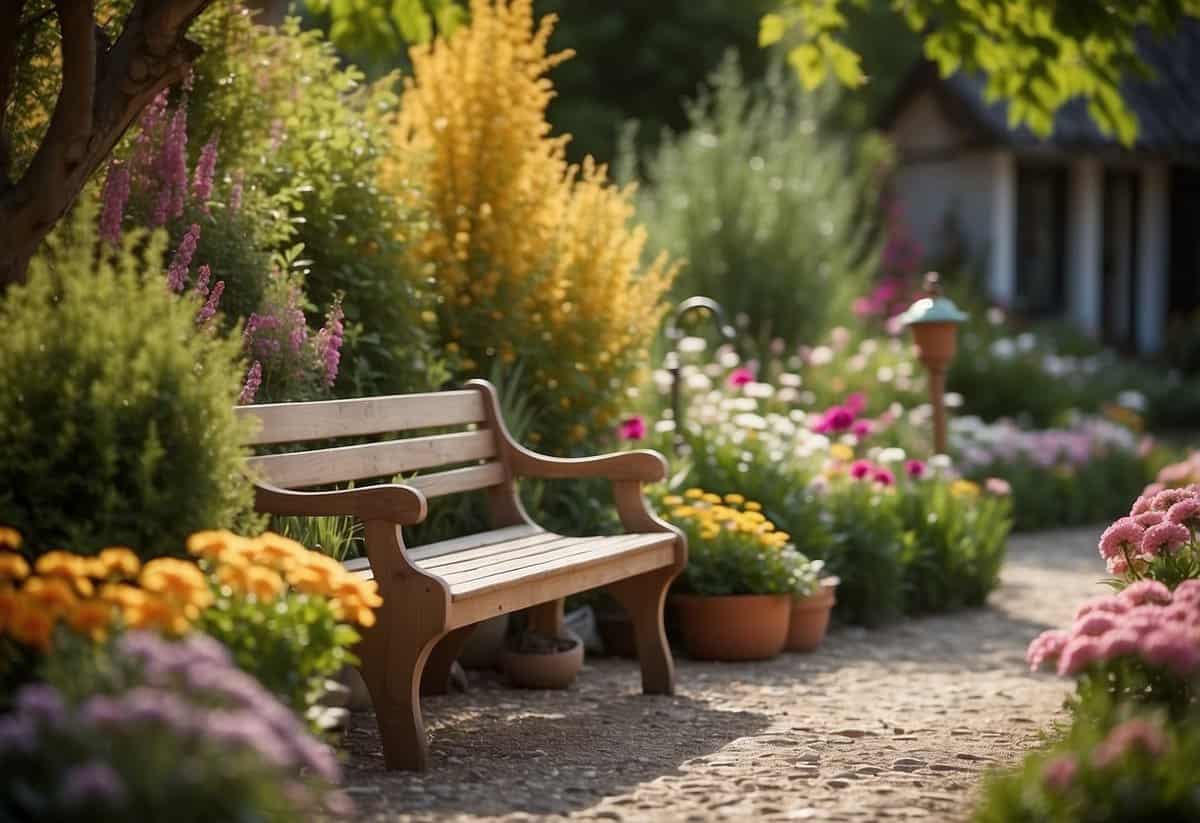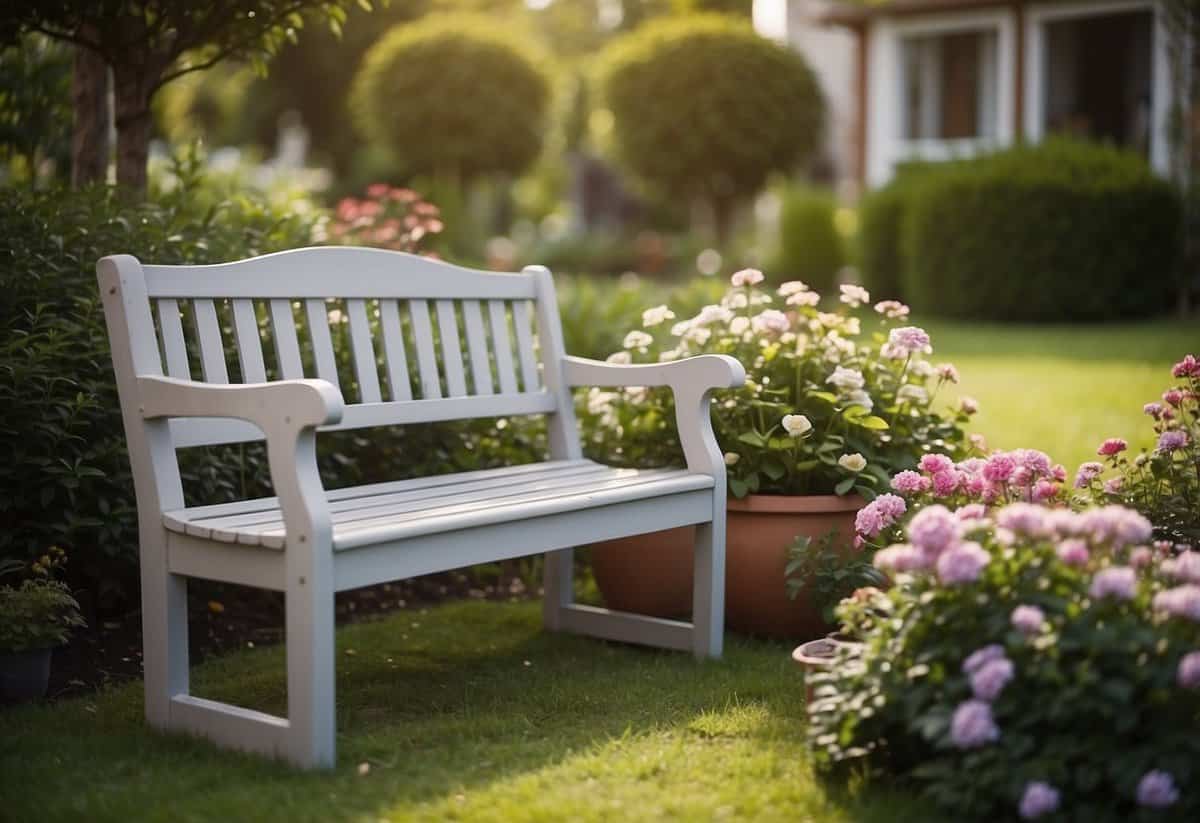Front Garden Tips: Simple Ways to Boost Your Curb Appeal
Creating a beautiful and welcoming front garden can enhance the curb appeal of your home. A well-designed front yard not only impresses your visitors but also provides a pleasant view for you every day. You can achieve a stunning garden with just a few thoughtful design choices and the right plants.

Whether you have a small space or a large lawn, there are numerous ways to make your front garden stand out. Flowers, shrubs, and decorative elements can all play a part in creating an inviting atmosphere. As you explore different landscaping ideas, remember that your front garden is a reflection of your personal style.
1) Use Native Plants

Adding native plants to your front garden is a great idea. They are well-suited to your local climate and soil, which means they need less water and care. This makes your garden easier to maintain.
Native plants also support local wildlife. Birds, butterflies, and bees are more likely to visit your garden if you have native plants. This makes your garden more lively and beautiful.
For design ideas, you can check out some native landscape plans. They offer various styles, like front yard formal shade and front yard formal sun gardens. These can help you choose the best plants and arrangements for your space.
2) Install Some Pathways

Creating paths in your garden can make it both beautiful and practical. A well-placed path can guide you to different areas and make the space feel more organized.
Consider using materials like gravel, stepping stones, or flagstones. These can add a charming touch while being easy to walk on.
For more ideas, you can check out these beautiful garden path ideas and get inspired to design your own.
3) Create a Focal Point

A focal point in your front garden instantly catches the eye. It can be anything from a statue to a beautiful plant.
Consider using climbing plants such as honeysuckle or climbing roses over an archway. They add color and fragrance.
Another idea is placing a fountain at the center of a patio. The sound of water is very soothing and draws attention.
4) Add a Bird Feeder

Adding a bird feeder to your front garden can bring a delightful array of birds.
Choose a spot that gets sunlight but is away from trees to avoid attracting squirrels. Keep it about 6 feet off the ground.
Place different types of feeders to attract more species. For more information, visit this guide on relevant placements.
5) Incorporate Garden Lighting

Adding lights to your front garden can make it look magical at night. Use festoon lights to decorate a rose arch, hedge, or fence. They add a lovely glow that makes your garden inviting and warm.
Place lights near your front door or porch. Fix them 6 to 10 feet off the ground to cover a larger area. This helps you see better when walking up to your home.
Consider using lanterns on the ground or hanging them from trees. They can light up paths and make your garden safer to walk through at night.
6) Plant a Variety of Flowers

Planting a variety of flowers adds charm and color to your front garden. Mix perennials like roses and lavender with annuals to enjoy blooms throughout the year.
Use plants of different heights and textures. This creates a visually appealing landscape. Tall plants at the back, shorter ones in front.
Pick flowers of various colors. This will make your garden vibrant and eye-catching. Prioritize plants that thrive in your climate to ensure they flourish.
7) Use Mulch for Weed Control

Mulch is a great way to keep weeds out of your garden. By placing mulch on the soil surface, you block sunlight from reaching weed seeds. Without sunlight, the seeds can’t germinate.
You can use different types of mulch like organic mulch, which also helps improve soil quality. Mulching helps retain soil moisture, so you won’t need to water as often. This makes it a win-win for your garden.
Remember not to pile mulch too high. A layer of 2 to 3 inches is usually enough. This helps keep your plants happy and healthy. For more tips, check out HGTV’s guide on mulching!
8) Install a Garden Bench

Adding a garden bench can turn your front yard into a cozy spot.
Choose a bench that suits the style of your garden.
Place it in a shaded area for a cool retreat on hot days. For those who enjoy DIY, there are many simple plans available, such as this one on How to Make an Outdoor Garden Bench.
Enjoy relaxing in your beautiful front yard.
9) Feature a Water Element

Adding a water element to your front garden can create a serene and welcoming atmosphere. You could include a small pond, a fountain, or even a birdbath.
Placing your water feature carefully is key. The North direction can enhance your career, while Southeast promotes abundance and prosperity.
Make sure water flows smoothly to maintain positive energy and uplift your space. Learn more about best placement for a water feature in your garden.
10) Use Fertilizers

Fertilizing your front garden is essential for healthy plant growth. There are several methods to choose from.
For large areas, consider broadcasting. Sprinkle granular fertilizer evenly over the soil.
For targeted feeding, try side-dressing. Place granules near the plant base, avoiding stems.
Foliar feeding is another option. Mist diluted liquid fertilizer directly onto the leaves. This lets plants absorb nutrients quickly.
Selecting the right fertilizer is important. For most vegetables, a general formula with balanced nutrients works well. For tomatoes, use a 3-4-6 fertilizer with added calcium to prevent blossom-end rot. Following these tips will ensure your garden stays vibrant and healthy.
Planning Your Front Garden

Creating a beautiful front garden involves examining the amount of sunlight it receives and carefully choosing suitable plants. Use a mix of heights, textures, and colors to enhance the space’s appeal.
Assessing Sunlight and Shade
Start by observing your front garden at different times of the day. Note areas that receive full sun, partial sun, or shade. This will help in selecting the right plants for each spot.
You can use tools like a sunlight meter to get accurate readings. Pay attention to how sunlight changes with the seasons. Summer and winter lighting can differ significantly. Make a simple chart to track sunny and shady spots throughout the day.
Knowing the light levels helps avoid planting sun-loving plants in shady areas, which can keep your garden looking vibrant and healthy.
Choosing the Right Plants
Choose plants that match the sunlight patterns of your garden. For sunny spots, consider sun-loving plants like marigolds or zinnias. In shaded areas, hostas and ferns thrive well.
Think about the overall look you want to achieve. Mix plants of different heights to create visual interest. Perennials are great for long-term beauty without much maintenance. Easy-to-grow options like wildflowers can add a natural charm.
Incorporate variety by including plants with different textures and colors. This can lead the eye toward a focal point, often the front door, making your garden inviting and visually appealing. For more detailed ideas on designing a charming entrance, visit GardenBeast.
Soil Preparation and Fertilization

Proper soil preparation and fertilization are crucial for a healthy front garden. You need to test the soil to understand its condition and amend it if necessary. Then, decide whether to use organic or synthetic fertilizers to enrich your soil.
Testing and Amending Soil
Before planting, it’s important to test your soil. A moisture test can help you identify if you have sandy or clay soil. Squeeze a handful of moist soil: sandy soil falls apart, while clay holds its shape. For a more detailed analysis, you can also do a ribbon test. Press a ball of moist soil between your thumb and forefinger. The longer the ribbon that forms before breaking, the higher the clay content.
To amend your soil, you may need to adjust its pH. If your soil is too acidic, adding lime can help. Lime provides calcium and magnesium and makes soil less acidic. If your soil is alkaline, using powdered sulfur can increase acidity. For more tips on soil preparation, visit this expert guide.
Organic vs. Synthetic Fertilizers
Choosing between organic and synthetic fertilizers depends on your garden’s needs. Organic fertilizers like compost and aged manure improve soil structure and add nutrients slowly. They help retain moisture and encourage beneficial microorganisms. You can also add bone meal or superphosphate if additional nutrients are needed.
Synthetic fertilizers, on the other hand, provide an immediate nutrient boost. These are great for quick results but can sometimes degrade soil health over time if overused. Balancing both types of fertilizers can often yield the best results for a thriving front garden.
For more detailed guidance, you can refer to this ultimate guide on soil preparation and fertilization.
Design and Aesthetics

Creating a beautiful front garden involves choosing the right colors and plant combinations, as well as incorporating garden structures to add visual interest. These elements work together to give your garden its unique look and feel.
Color Schemes and Plant Combinations
Choosing a color scheme for your garden can make a big difference. Bright colors like reds and yellows can add energy, while soft pastels create a calming effect.
Mixing different plants is also important. Combine plants that bloom at different times to ensure your garden looks good all year. Perennials like irises and day lilies come back every year and get larger over time. Pair these with evergreens to add structure. Ornamental grasses and succulents can give your garden a modern, clean look, especially if you keep to a simple color palette with greens and whites. For more detailed ideas, check out modern front yard landscaping ideas.
Incorporating Garden Structures
Adding structures like arbors, trellises, or large containers can also boost your garden’s appeal. An arbor with climbing roses creates a charming entrance.
Place a large container as a focal point near your front door. You can fill it with seasonal flowers to keep things fresh. Bird baths, window boxes, and flower beds add more layers of interest to your garden. For example, low-growing hedges mixed with colorful flowers can create a welcoming look. To find more ideas on structures, look at these front yard landscaping tips.







